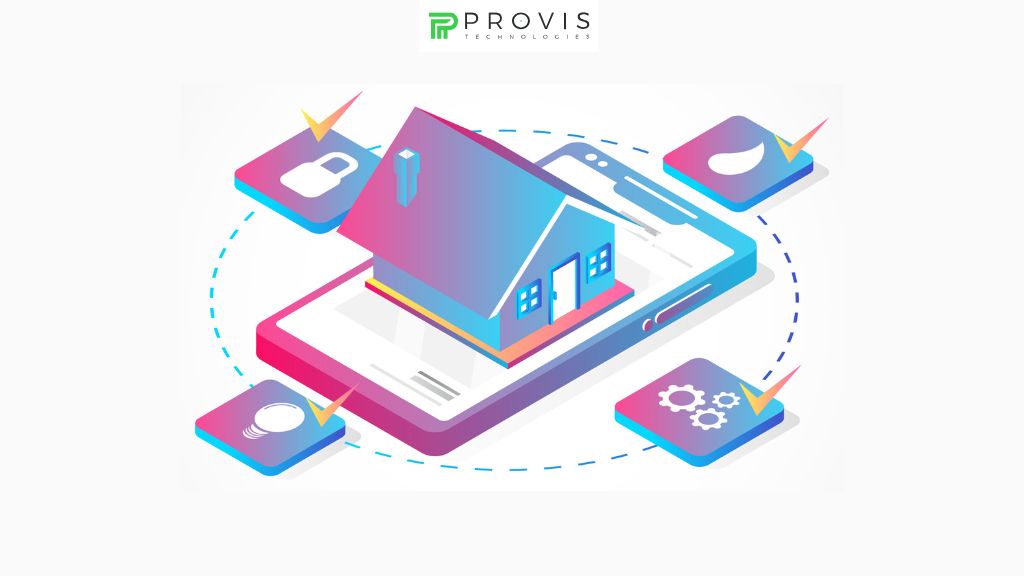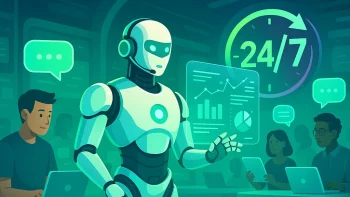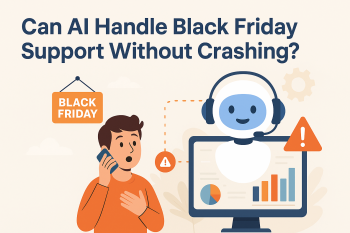How things have started and where they have come – the difference is clear to all of us. We are talking about technology and digitization. They have been rapidly and continuously evolving ever since. First, phones have become smart, and today, our homes are on the way to becoming smart. The journey from smartphones to smart homes involves lots of things – but the most intriguing one among them is IoT or the Internet of Things. In this post, we will talk about the role of IoT in web & mobile app development for smart homes. We will understand what IoT is and how it helps apps to become more intelligent. So, let’s evaluate the importance of IoT in smart home app development.
IoT Statistics
Check out these amazing figures of smart home users worldwide from 2019 to 2028, as per Statista.
- Statista predicts that IoT-driven smart home app users will reach 785.16 million users by 2028.
These figures express a lot. IoT is indeed in demand, and this demand will only increase with time. Trust us, now is the best time to join this market, as it has the potential to bring you rapid growth and long-term success. For IoT-based smart home app development, connect with Provis Technologies today.
What exactly is IoT?
The IoT refers to a network of physical devices, such as home appliances, vehicles, sensors, and other objects – that are embedded with software, sensors, and connectivity to exchange data over the Internet. These devices can communicate with each other & centralized systems to enable remote control, automation, and real-time data analysis. IoT allows for smarter, more efficient operation of devices, which means they can enhance everything from smart homes to entire industries and beyond. Its core idea is to bring “things” online for greater interactivity and functionality in our everyday lives. That’s What exactly IoT is. You get it now?
The Role of IoT in Web & Mobile App Development for Smart Homes
The IoT integration in web & mobile app development is a way to fulfill IoT’s core idea, i.e., better interactivity in day-to-day lives. With the rise of smart devices, homeowners can now control lighting, security, appliances, and more – directly from their smartphones or computers. This transformation became possible due to smooth interaction between IoT devices and user-friendly apps – making smart homes more efficient & secure.
Connecting Devices & Apps
The key role of IoT in smart home development is connecting devices to central control systems, often managed through apps. IoT allows smart home devices like lighting systems, security cameras, and door locks to communicate with each other and the app. So, developers must create an app interface that supports real-time interaction with these devices to enable users to monitor & control their homes from anywhere. Let’s say, a mobile app can notify a homeowner when motion is detected by a security camera. With IoT integration, the user can instantly access the camera feed, lock or unlock doors, or adjust the lighting – without needing to be physically present. That’s what this is all about!
Real-Time Data & User Control
IoT devices constantly collect & share data, and this real-time data flow is one of the essential components developers need to integrate into the apps to make them better. Applications serve as the interface for users to view this data and make informed decisions. Like, a smart thermostat collects temperature & occupancy data, which is relayed to an app – meaning it allows the user to adjust settings remotely or even automate temperature changes based on real-time conditions. Developers must make sure that apps are equipped to handle vast amounts of data and present it in a user-friendly way. An intuitive dashboard that simplifies data visualization is a must for enhancing the user experience in smart homes.
Better Security in Smart Homes
Security has always been a major concern in everything, smart home apps are no special. From smart locks to surveillance cameras, security systems connected through IoT can be monitored & controlled via apps. Developers working on these apps need to make certain that there is secure communication between the devices & the app. They must employ encryption and other security protocols to protect data. In simple words, if a door is unlocked through a mobile app, the app needs to verify the user’s identity – so the command is securely transmitted to the IoT-enabled door lock. This requires the integration of security features such as multi-factor authentication (MFA) and encrypted data transmission to protect the user’s home from unauthorized access. The point is only you can control your door from your phone, anyone else must not.
Automating Daily Tasks with IoT Apps
Automation – one of the coolest things about IoT in smart homes. IoT allows developers to create apps that enable users to automate daily tasks. Users can set their smart lighting system to automatically adjust brightness based on the time of day & whatnot. Incorporating IoT-based automation into apps requires developers to build features that can interact with multiple devices simultaneously. This involves designing interfaces that allow users to easily create schedules, set triggers, and manage device interactions in simple ways. If you need such smart applications, you can connect with Provis Technologies.
Seamless Integration with Voice Assistants
Voice assistants like Alexa, Google Assistant, and Siri are increasingly becoming a part of our daily lives – no? IoT enables these assistants to communicate with smart devices, but the apps that manage these devices also need to be compatible with voice control systems. So, developers must make certain that their apps are integrated with these voice assistants. What happens is nowadays, users ask Alexa or Google Assistant to turn off the lights. And the IoT app receives this command and executes it through the connected device. This smooth voice command functionality is an essential part of app development for smart homes – and it has become nonnegotiable now because people use it.
Scalability for Future Expansion
Smart homes are evolving with new devices & features being introduced regularly. IoT apps need to be scalable to accommodate this growth. Developers should design apps with future expansion in mind to ensure they can easily integrate new devices and systems as the user’s smart home setup grows. Say, a user adds new smart security sensors, then the app should be able to recognize and integrate these new devices easily. The code architecture has to be flexible & scalable to support future upgrades.
Energy Efficiency & Sustainability
The good thing is that IoT in smart homes also promotes energy efficiency. Through web & mobile apps, homeowners can monitor energy usage, set energy-saving modes, and control devices to reduce consumption. Smart home apps allow users to track the energy usage of individual devices and make adjustments that lead to long-term cost savings. For instance, an app can notify a user if the heating is on when no one is home. This is very important to let users know when to switch off devices and reduce energy wastage. Developers need to integrate real-time energy-tracking features into the app to help people maintain an eco-friendly lifestyle. Indeed the best benefit of IoT and smart home apps!
Improving User Experience with Intuitive Design
While the technology behind IoT devices is complex, the user experience should be simple. Developers must focus on creating an intuitive, user-friendly interface that simplifies the operation of smart devices. The goal is to make the user experience as simple as possible for homeowners to use their smart home systems hassle-freely
Challenges in IoT App Development
Despite the benefits, there are challenges, obviously, when integrating IoT into web & mobile app development. Developers need to deal with various communication protocols used by different IoT devices. The compatibility between devices from different manufacturers can also be a challenge. Also, maintaining robust security for IoT systems, which are often vulnerable to cyberattacks, is another big one. As smart home devices rely on stable internet connections, apps must be able to handle connectivity issues gracefully and offer offline functionality where possible.
Bottom Line
The role of IoT in web and mobile app development for smart homes is essential in creating a well-connected living environment. From real-time control to automation, IoT-powered apps offer great convenience, no doubt. For developers, focusing on scalability, intuitive design, and robust security is crucial for creating successful IoT applications in the growing smart home market. Here, at Provis Technologies, we have always been innovative and experimental – if you need such applications, feel free to connect with us. We are eager to hear about your project and sit with you to build a plan for you.
FAQs
How well are IoT devices doing?
Statista predicts that IoT-driven smart home app users will reach 785.16 million users by 2028. With these figures, you know how well they are doing.
How to get a smart app that can control my smart home appliances?
Connect with Provis Technologies. Provis Technologies can make such apps for you with the best functionality.
What is the best benefit of IoT devices and smart home apps?
Energy saving is the best benefit of IoT devices and smart home apps. You can turn off your devices from anywhere.
Written By
Author's Picks
- How AI Is Shaping The Future Of Wealth Management – Benefits And Applications
- 19/09/2024
- How to Build a FinTech App: A Step-by-Step Guide
- 05/09/2024
- 20 Best Free Live Streaming Apps
- 23/11/2024
Categories
- AI for Startups
- AI in Web Development
- AI Integration
- AI Platforms
- AI Prompt
- AI Tools
- AI Trading Software
- Android App
- Android vs iOS Development
- Angular
- API
- API Development
- App
- app development
- App Idea
- App User Feedback
- Application
- Artificial Intelligence
- Audit Services
- Automotive Industry
- Awards and Recognition
- Business Consulting
- Business Website
- Chatbots
- CRM
- CRM for Financial Advisors
- Custom CRM
- Custom SaaS
- Custom Website
- Customer Service
- dashboard design
- Developing a Mobile App
- Digital Business
- E-commerce
- EMR Integration
- Finance
- Financial Advisors
- Financial Advisors
- GIT
- Health Insurance
- iOS App
- iOS App Development
- IoT Mobile App Development
- IoT Platforms
- IT Audit Services
- IT Consulting
- IT Strategies
- Java Development
- Laravel
- Lean Canvas
- Learning Management System
- Logistics Apps
- Mobile App Development
- MVP
- Native App
- News Aggregator Site
- OTT
- Outsourcing IT
- Payment Gateway
- predictive analysis
- Product Launch Strategy
- Progressive Web App (PWA)
- Prototype
- Recommender Systems
- Ruby
- SaaS
- SaaS Application
- SaaS Business
- SaaS Company
- SaaS Development
- SaaS Product
- SaaS Project
- Sales Funnel
- SEO
- Shopping Cart
- Software Development
- SSL and TLS
- Startup Checklist
- Technology
- Tetradic Color Scheme
- UI/UX Design Company
- Unit Testing
- User Flow
- User Testing
- Web Development
- Web Performance Optimization
- website Maintenance Services
- Website Migration Service
- Website Speed Optimization
- WooCommerce
- WordPress





